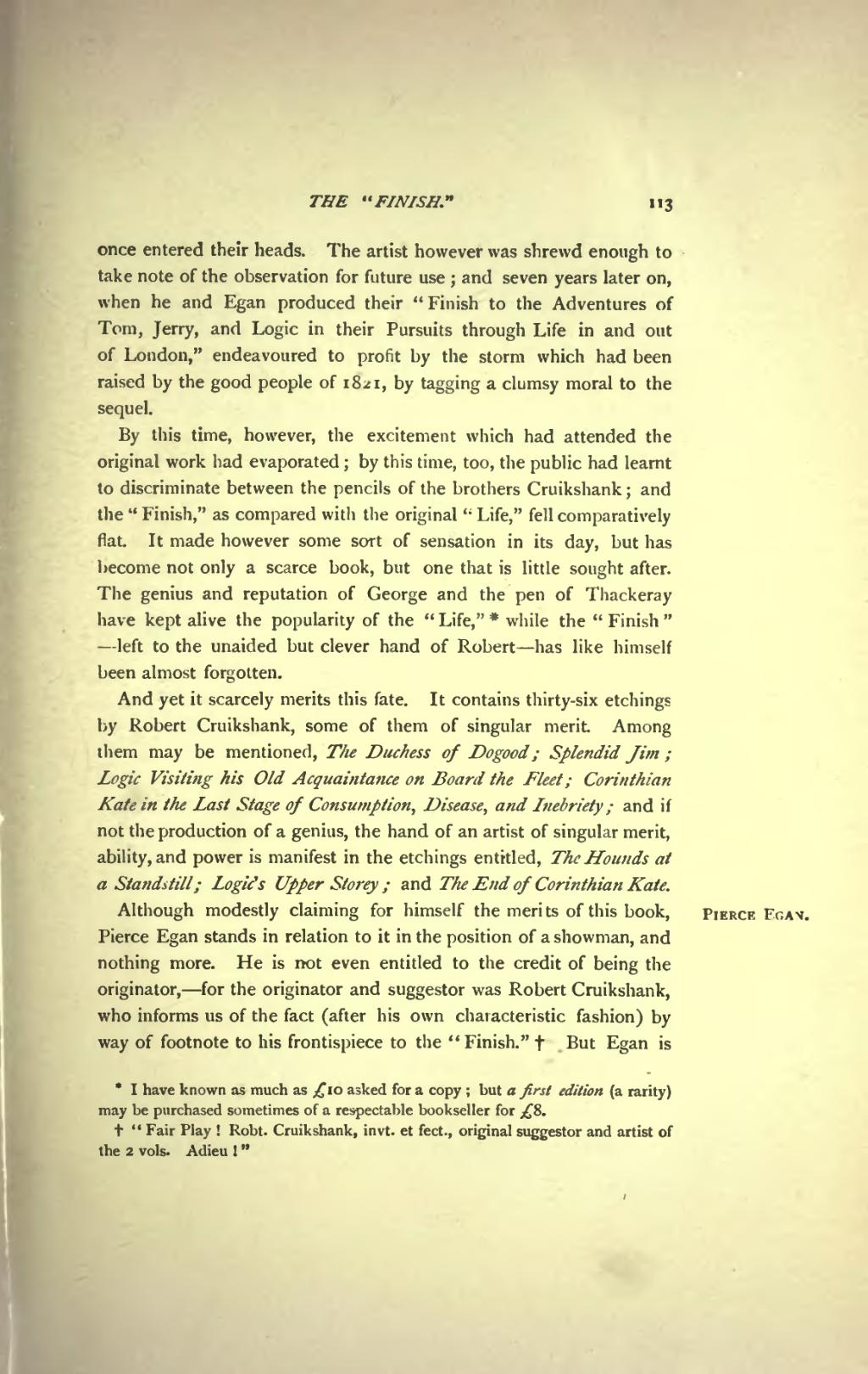once entered their heads. The artist however was shrewd enough to take note of the observation for future use; and seven years later on, when he and Egan produced their "Finish to the Adventures of Tom, Jerry, and Logic in their Pursuits through Life in and out of London," endeavoured to profit by the storm which had been raised by the good people of 1821, by tagging a clumsy moral to the sequel.
By this time, however, the excitement which had attended the original work had evaporated; by this time, too, the public had learnt to discriminate between the pencils of the brothers Cruikshank; and the "Finish," as compared with the original "Life," fell comparatively flat. It made however some sort of sensation in its day, but has become not only a scarce book, but one that is little sought after. The genius and reputation of George and the pen of Thackeray have kept alive the popularity of the "Life,"[1] while the "Finish"—left to the unaided but clever hand of Robert—has like himself been almost forgotten.
And yet it scarcely merits this fate. It contains thirty-six etchings by Robert Cruikshank, some of them of singular merit Among them may be mentioned, The Duchess of Dogood; Splendid Jim; Logic Visiting his Old Acquaintance on Board the Fleet; Corinthian Kate in the Last Stage of Consumption, Disease, and Inebriety; and if not the production of a genius, the hand of an artist of singular merit, ability, and power is manifest in the etchings entitled, The Hounds at a Standstill; Logic's Upper Storey; and The End of Corinthian Kate.
Pierce EganAlthough modestly claiming for himself the merits of this book, Pierce Egan stands in relation to it in the position of a showman, and nothing more. He is not even entitled to the credit of being the originator,—for the originator and suggestor was Robert Cruikshank, who informs us of the fact (after his own characteristic fashion) by way of footnote to his frontispiece to the "Finish."[2] But Egan is

